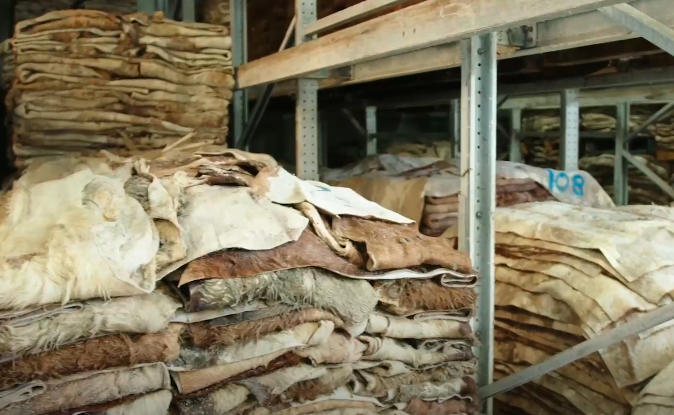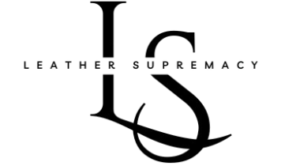Do you know how leather develops its wonderful texture, strength, and classic look? The whole process starts with leather tanning. This old method turns raw animal hides into supple, long-lasting leather which is used for making jackets, wallets, the list goes on and on. Why is leather tanning so important? Besides; why is it so much work? So let’s get into the world of leather tanning, its different types and the steps it takes to make that hide into a beautiful leather.
What Is Leather Tanning?
Leather tanning is the process of treating animal hides to prevent decomposition and to make the material durable, flexible, and beautiful. The stabilization of the fibers in animal skin is done by this process, which uses chemicals or natural substances, called tannins. Without tanning, the hide would break down so quickly, that it would lose its shape.
Tanning has evolved much over the years from rough, old methods to more refined modern techniques. Still, leather tanning is one of the most important phases of leather production, whether it’s for real or faux leather.
The Importance of Leather Tanning
Preserving the hide and improving its natural qualities such as flexibility and resistance to wear, leather tanning also adds color and texture to leather to suit specific styles and purposes. There are several tanning methods, and each one creates its leather finish that goes into the production of anything from rugged jackets to luxury handbags.
Types of Leather Tanning
When it comes to leather tanning, there are two main categories: real leather tanning and false leather tanning. Here’s what you need to know:
Real Leather Tanning
In real tanning, the tannins get bonded to fiber in the skin in a way that is almost permanent. There are two main types of real tanning:
Vegetable Tanning
This traditional method uses natural tannins derived from plants such as mimosa or oak and usually offers high-quality leather. Vegetable tanning can take weeks or even months, but the result is leather that’s tough, eco-friendly, and suitable for products belts and bags. Vegetable-tanned leather is often firm and usually has a rich, natural color, which deepens over time.
Chrome Tanning
First introduced in 1858, it was a quicker, cheaper process. The natural tannins are replaced with chromium salts, so entire batches of hides may be tanned in a single day. Chrome tanning produces soft and supple leather that can be dyed in almost any color, which therefore makes it popular for leather jackets and leather handbags.
False Leather Tanning
False tanning involves processes that do not completely bond the tannins with the hide producing a washable but less durable leather. Some popular types include:
Oil Tanning
In this method, oils and waxes are placed onto the chrome-tanned leather to make it more flexible and to give it a special feel. If you are going to use your leather goods outdoors oil tanned leather is perfect, because it can’t get wet and doesn’t stiffen in winter.
Brain Tanning
This is an ancient method using the animal’s brain to tan its hide and a smoking process that gives the leather its unique smell and color. Brain tanning involves very labor-intensive work but the resulting leather can ultimately be very soft and breathable.
Rawhide Tanning
Rawhide tanning is not a full tanning process as it is soaking the hide to make it pliable without using tannins to bond it. For most things, rawhide is used. It is an item common to drumheads and some horse tack.
Chemicals Used in Leather Tanning
Leather tanning involves chemicals used to change the leather for a more appealing look, feeling and smell. The chemicals, or tannins, are important to leather tanning as they prevent the hide from decomposing. When tannins bind with the collagen proteins in the hide, it stabilizes the hide for long-term use. Here are some commonly used tanning agents:
Mineral Tanning Agents
Chrome III: This is widely used in chrome tanning.
Alum: One of the mineral tanning agents used for lighter, softer leather.
Vegetable Tanning Agents
Mimosa and Sumac: These are plant extracts used in vegetable tanning for their natural tannins.
Quebracho and Tara: These are from the trees and contain tannins naturally that result in a firm texture and unique colouring of the leather.
The Leather Tanning Process: Step-by-Step

Let’s break down the leather tanning process into four main stages:
Stage 1: Preparing the Hide
It begins with pulling hair, fat and other debris out of the hide. It is soaked often in a lime solution, to loosen the hair, and then it’s mechanically tumbled to remove residual fats, which results in the preparation of hide for tanning.
Stage 2: Pickling
Then the hide is prepared by treatment with salt and acid to reduce pH and to ready it for absorption of tannin. This ‘pickling’ step ensures that the hide can fully absorb the tannins as it is necessary for long-lasting preservation.
Stage 3: Tanning
That’s when the specific tanning method comes into play. It doesn’t matter if the hide is vegetable or chrome, the tannins are applied and absorbed, turning the raw hide into leather. The tannins specifically bond with the hide’s proteins, making the hide much more durable.
Stage 4: Finishing
Then it’s time to add oils, dyes, and other finishing touches to the leather. It may involve waxing or applying a second round of tanning.
Common Questions About Leather Tanning
What is leather tanning, and why is it important?
It involves the treatment of animal hides to prevent decomposition and make the material durable. That’s important because it’s what makes leather so strong and long-lasting, and what gives it a unique look.
Which is better; oil-tanned leather or chrome-tanned leather?
Oil-tanned leather is really durable, water-resistant and perfectly suited for outdoor items. While chrome-tanned leather is softer and can be dyed into a variety of colors, it is ideal for fashion.
Why does leather smell differently?
The tanning process especially vegetable tanning uses natural substances that give the leather a unique smell.
Leather Tanning: The Bottom Line
Leather tanning is an interesting, multi-step process that has developed over the ages. Leather is tanned using the traditional vegetable tanning methods of ancient Egypt to the modern chrome tanning technique all of which bring their character and durability to the leather. You are certainly drawn to leather for its beauty, durability or its craftsmanship, but understanding how leather is tanned will make you better appreciate the material.
If you have more questions about leather tanning or how to choose the best leather for you, let us know!





Unquestionably believe that which you stated. Your favorite reason seemed to be on the internet the easiest thing to be aware of. I say to you, I definitely get irked while people think about worries that they plainly don’t know about. You managed to hit the nail upon the top and defined out the whole thing without having side effect , people can take a signal. Will probably be back to get more. Thanks